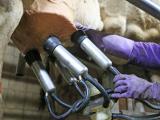Feb 5, 2004 (CIDRAP News) – As the human and animal toll from H5N1 avian influenza continued to rise, United Nations health and agricultural officials at a conference in Rome today endorsed selective vaccination of poultry to fight the spread of the disease.
"A targeted vaccination campaign for poultry at risk of being infected by the highly pathogenic avian influenza virus may be required in heavily affected countries to control the further spread of the epidemic," said a statement from the UN Food and Agriculture Organization (FAO).
Vaccination might limit the need for mass sacrifice of flocks outside infected sites and reduce economic damage, said the statement. It came after 2 days of discussions involving the FAO, the World Health Organization (WHO), and the World Organization for Animal Health (OIE).
Meanwhile, the WHO reported three more human deaths from confirmed avian flu, including two in Vietnam and one in Thailand. In Vietnam, a 17-year-old girl died Jan 27 and a 16-year-old girl died Feb 3, the agency said. Both were from southern Vietnam. Their cases brought the number of confirmed cases in Vietnam to 15, including 11 fatal ones. Two patients have recovered and two remain hospitalized.
In Thailand, a 6-year-old boy from Kanchanaburi Province fell ill Jan 24 and died Feb 2, the WHO said. Thailand has had five confirmed human cases, all of them fatal. So far Thailand and Vietnam are the only countries with confirmed human cases in the current outbreaks.
Disease experts fear that the avian flu could lead to a new human flu pandemic if the H5N1 virus infects a person who is already carrying an ordinary flu virus. The two viruses could combine to form a new strain that might spread easily from person to person. No person-to-person spread of avian flu has been confirmed in the current outbreaks.
A new poultry outbreak of the disease was reported in South Korea today, the country's 19th and its first in 10 days, according to the Korea Times. The disease struck two duck farms in South Chungchong Province. Local authorities sealed off areas within 3 kilometers of each farm and slaughtered 14,000 ducks to control the outbreak, the Times reported.
The FAO estimated yesterday that 50 million chickens have been sacrificed so far in the battle to contain avian flu. The agency said the disease had spread to 53 of 64 provinces in Vietnam and 12 of 31 provinces in China.
Elsewhere, Indonesian officials, who initially had said they would use vaccination to fight the epidemic, said they would sacrifice 10 million birds, according to a Reuters report today.
In the same report, Thai officials sounded a rare optimistic note, saying their culling campaign seemed to be working. A government spokesman was quoted as saying the number of "red zones" surrounding confirmed outbreaks had dropped to 10, compared with 140 last week.
A WHO statement today was careful to qualify its support for poultry vaccination to fight the virus. Authorities at the Rome meeting "concluded that culling, or 'stamping out,' of infected flocks remains the preferred option for controlling H5N1 outbreaks in poultry," the agency said.
"While culling remains the preferred option for infected flocks, targeted vaccination of healthy poultry can be used as a complementary tool for achieving the rapid reduction of the risk posed by the H5N1 virus in its avian hosts—an objective which supports both elimination of the disease in poultry and prevention of further human cases and deaths. Vaccination alone will not be sufficient to bring the present outbreaks in poultry under control."
Klaus Stohr, the WHO's chief flu expert, noted that poultry vaccination has drawbacks, according to an Associated Press report. Stohr said studies have shown that after vaccination, only about 50% of birds will stop shedding virus. "In the longer term, these birds will continue to excrete the virus and if these birds are moved, they might look completely healthy but they might continue to spread the disease," he was quoted as saying.
A report last week in the magazine New Scientist suggested that poultry vaccination with an inactivated H5N1 virus following Hong Kong's H5N1 outbreak in 1997 might have contributed to the current epidemic. The report said that if the vaccine didn't match the virus closely, the virus might have been able to replicate without causing symptoms and thereby spread unnoticed.
Today's FAO statement indicated that current vaccine supplies may not be adequate for widespread poultry inoculations. "The experts agreed that manufacturers have some stocks of relevant vaccine available but they would need a few months to gear up to produce sufficient amounts of the required vaccines," the agency said.
See also:
Feb 5 WHO update on avian flu
http://www.who.int/csr/don/2004_02_05/en/
Feb 5 FAO-WHO-OIE statement
http://www.fao.org/newsroom/en/news/2004/36647/index.html
Feb 4 FAO statement
http://www.fao.org/newsroom/en/news/2004/36547/index.html
OIE chart of affected countries, with links to official reports
http://www.oie.int/downld/AVIAN%20INFLUENZA/A_AI-Asia.htm





















